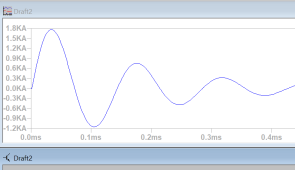With the cover off you can probably read capacitors and add them up. Mine might have looked like two batches in series, nP2S, can't remember for sure.
You could also measure charge rate through a resistor from a battery, determine capacitance.
An inrush-limit resistor seems prudent for Lithium.
Sunny Island documentation allows 100 Ah to 100k Ah lead-acid, doesn't mention an issue. Lithium would be through a supported BMS. I don't know what they do for inrush limit. Used to be LG RESU (48V). Sunny Boy Storage uses LG RESU-H (400V) which we've learned is a boost converter from a 48V battery so inherently current limited.
FET based vs. relay (one guy here has been welding Gigavac relays with his system.) What you want is a "precharge" command followed by "close relay", for when BMS automatically disconnects and later reconnects.
I could come up with a circuit using two high-current relays, but that's extra expense. Maybe FET & resistor, delay, relay.
Got links to slow-blow & fast-blow class-T? I've only seen one family of curves. And I don't like that it is a single line per value, not a "must trip" and "won't trip" pair like I see for breakers.





